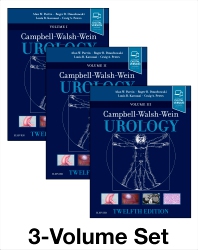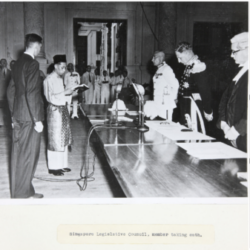Part I Clinical Decision Making
1 Evaluation of the Urologic Patient
2 Evaluation of the Urologic Patient
Chemical Examination of Urine
Radiation Management in Uroradiology
Plain Abdominal Radiography
Magnetic Resonance Imaging
Brief History of Ultrasound in Urology
Contrast Agents in Ultrasound
Clinical Urologic Ultrasound
Principles of Single Photon and PET Imaging
Functional Imaging of the Kidneys
Molecular Imaging of Genitourinary Malignancies
6 Assessment of Urologic and Surgical Outcomes
Establishing a Conceptual Framework for Assessing the Effectiveness of Treatment and Improving Care in Urology
Long-Term Disease Outcomes That Are Commonly Assessed in Urology
Commonly Assessed Short-Term Outcomes
Patient-Reported Outcomes
Other Outcomes of Interest in Urology
7 Ethics and Informed Consent
Part II Basics of Urologic Surgery
8 Principles of Urologic Surgery
Preoperative Cardiovascular Evaluation
Intraoperative Management
9 Principles of Urologic Surgery
Anterior Approaches to the Kidney and Retroperitoneum
Incisions for Specific Surgeries
10 Principles of Urologic Surgery
Suture Material and Incision Closure
11 Lower Urinary Tract Catheterization
Indications for Lower Urinary Tract Drainage
Technique of Urethral Catheterization
Suprapubic Catheterization
Difficult Catheterization
Complications of Lower Urinary Tract Drainage
12 Fundamentals of Upper Urinary Tract Drainage
Percutaneous Renal Access and Drainage
Retrograde Renal Access and Drainage
13 Principles of Urologic Endoscopy
Basic Equipment and Video-Endoscopic Systems
14 Fundamentals of Laparoscopic and Robotic Urologic Surgery
Strategic Placement of Operative Team and Equipment
Physiologic Considerations in the Adult
Complications and Troubleshooting in Laparoscopic and Robotic Surgery
Training and Practicing Laparoscopic and Robotic Surgery
15 Basic Energy Modalities in Urologic Surgery
Tissue Dissection and Cauterization
Intracorporeal Lithotripters
Holmium:YAG and Erbium:YAG Laser Lithotripsy
Dual-Modality Lithotripters
16 Evaluation and Management of Hematuria
Classification and Timing of Hematuria
Guideline-Based Evaluation of Patients With Microhematuria
Symptomatic Microscopic Hematuria
Hematuria From Prostatic Origin
Hematuria Originating From the Upper Urinary Tract
17 Complications of Urologic Surgery
Classification of Complications
Physiologic Complications
Positional and Neuromuscular Complications
Urine Leaks After Upper Tract Urologic Surgery
Lower Tract Urinary Complications
18 Urologic Considerations in Pregnancy
Physiologic Changes During Pregnancy
Physiologic Hydronephrosis of Pregnancy
General Considerations for Imaging of the Pregnant Patient
General Concepts for Surgical Management of the Pregnant Patient
General Concepts of Urologic Medication Administration During Pregnancy
Urolithiasis in Pregnancy
Pregnancy in Women With Congenital Urologic Conditions
Functional and Anatomic Urologic Concerns During Pregnancy
Urologic Malignancy During Pregnancy
Management of Urinary Tract Infections in Pregnancy
Urologic Management of Placental Abnormalities
19 Intraoperative Consultation
Part III Pediatric Urology
Section A Development and Prenatal Urology
20 Embryology of the Genitourinary Tract
Development of the External Genitalia
Development of the Female External Genitalia
Development of the Human Prostate
Development of the Human Seminal Vesicle
Development of the Gonads
Müllerian Structures (Female Internal Genitalia)
Development of the Ureter
21 Urologic Aspects of Pediatric Nephrology
Renal Function, Fluid, and Electrolyte Homeostasis
Hematuria (Microscopic and Gross)
Urolithiasis: Medical Management
End-Stage Renal Disease: Dialysis and Renal Transplantation
Prenatal Multidisciplinary Consultations
Postnatal Evaluation and Management
Management Recommendations for Postnatal Urinary Tract Dilation
Lower Urinary Tract Obstruction (Posterior Urethral Valve, Prune Belly Syndrome, Urethral Stenosis/Atresia)
Exstrophy (Bladder/Cloacal)
Urogenital Sinus/Congenital Adrenal Hyperplasia
Perinatal Urgencies/Emergencies
Section B Basic Principles
23 Urologic Evaluation of the Child
Overview of Pediatric Urology
Presentations by Genitourinary Region
24 Pediatric Urogenital Imaging
Magnetic Resonance Imaging
Voiding Cystourethrography/Micturating Cystourethrogram
DMSA Renal Cortical Scintigraphy
Diuretic Renal Scintigraphy
Radionuclide Testicular Scanning
25 Infection and Inflammation of the Pediatric Genitourinary Tract
Evaluation and Management of a Child With a Fever
Classification of Pediatric Urinary Tract Infections
Diagnosis of Pediatric Urinary Tract Infection
Management of Pediatric Urinary Tract Infection
Management After Urinary Tract Infection
Sequelae of Pediatric Urinary Tract Infections
Uncommon Pediatric Urinary Tract Infections
26 Core Principles of Perioperative Management in Children
Preoperative Assessment and Preparation for Surgery
Comorbidities: Perioperative Planning and Postoperative Considerations
27 Principles of Laparoscopic and Robotic Surgery in Children
Advantages and Disadvantages of Minimally Invasive Surgery
Physiology of the Pneumoperitoneum
Patient Selection for Mimimally Invasive Surgery
Equipment and Instrumentation
Complications of Minimally Invasive Surgery
Simulation Training and Evaluation
Section C Lower Urinary Tract Conditions
28 Clinical and Urodynamic Evaluation of Lower Urinary Tract Dysfunction in Children
Evaluation Strategies for Specific Clinical Entities
29 Management Strategies for Vesicoureteral Reflux
Embryology of the Ureterovesical Junction
Functional Anatomy of the Antireflux Mechanism
Causes of Vesicoureteral Reflux
Urinary Tract Infection and Reflux
Diagnosis and Evaluation of Vesicoureteral Reflux
Assessment of the Lower Urinary Tract
Assessment of the Upper Urinary Tract
Controversies in Usage of Invasive Investigations
Associated Anomalies and Conditions
Natural History and Management
30 Bladder Anomalies in Children
Congenital Bladder Anomalies
Acquired Bladder Anomalies in Children
31 Exstrophy-Epispadias Complex
Incidence and Inheritance
Classic Bladder Exstrophy
Surgical Reconstruction of Bladder Exstrophy
Modern Initial Repair of Bladder Exstrophy: Outcomes and Results
Other Modern Exstrophy Repairs: Continence Outcomes
Exstrophy Reconstruction Failures and Complications
Transitional Exstrophy Patient: Adolescent and Adult Concerns
Long-Term Adjustment Issues
Surgical Reconstruction of Cloacal Exstrophy
Long-Term Issues in Cloacal Exstrophy
Clinical Features of Prune-Belly Syndrome
Evaluation and Management
33 Posterior Urethral Valves
Pathophysiology of Posterior Urethral Valves
Clinical Presentation and Initial Management
Management of Vesicoureteral Reflux
Bladder Dysfunction and Valve Bladder Syndrome
Prognostic Indicators for Renal Function
Transplantation in Valve Patients
Quality of Life With Posterior Urethral Valves
Urinary Fistula in Boys With Anorectal Malformation
34 Neuromuscular Dysfunction of the Lower Urinary Tract in Children
Management of Neuromuscular Dysfunction of the Lower Urinary Tract
Management of Vesicoureteral Reflux in Neuropathic Dysfunction of the Lower Urinary Tract
Lipomeningocele and Other Spinal Dysraphisms
Central Nervous System Insults
Conditions of the Brain (Tumors/Infarcts/Encephalopathies)
Conditions of the Spinal Cord
35 Functional Disorders of the Lower Urinary Tract in Children
Self-Esteem and Quality-of-Life Issues
Daytime Urinary Incontinence and Bladder Dysfunction
36 Management of Defecation Disorders
Epidemiology and Classification of Disorders of Defecation
37 Lower Urinary Tract Reconstruction in Children
“Functional” Urinary Tract
Bladder Neck Reconstruction
Continent Urinary Diversion
Section D Upper Urinary Tract Conditions
38 Anomalies of the Upper Urinary Tract
Anomalies of Renal Number
Anomalies of Renal Ascent
Anomalies of Renal Form and Fusion
Anomalies of Renal Rotation
Anomalies of Renal Vasculature
Anomalies of the Renal Collecting System
39 Renal Dysgenesis and Cystic Disease of the Kidney
Renal Agenesis and Dysplasia
Hypoplasia and Hypodysplasia
Cystic Diseases of the Kidney
Autosomal Recessive (Infantile) Polycystic Kidney Disease
Autosomal Dominant (Adult) Polycystic Kidney Disease
Juvenile Nephronophthisis and Medullary Cystic Disease Complex
Other Inheritable Renal Cystic Diseases (Congenital Nephrosis)
Familial Hypoplastic Glomerulocystic Kidney Disease (Cortical Microcystic Disease)
Multiple Malformation Syndromes With Renal Cysts
Multicystic Dysplastic Kidney
Benign Multilocular Cyst (Cystic Nephroma)
Sporadic Glomerulocystic Kidney Disease
Acquired Renal Cystic Disease
Calyceal Diverticulum (Pyelogenic Cyst)
Parapelvic and Renal Sinus Cysts
40 Pathophysiology of Urinary Tract Obstruction
Clinical Presentation of Obstruction
Progressive Renal Dysfunction
Definition of Obstruction
Pathological Changes of Obstruction
Tubulointerstitial Fibrosis
Hemodyamic Changes With Obstruction
Effects of Obstruction on Tubular Function
Egress of Urine From the Obstructed Kidney
Clinical Impact of Renal Obstruction
Treatment of Renal Obstruction
41 Ectopic Ureter, Ureterocele, and Ureteral Anomalies
Classification and Anatomic Description
42 Surgery of the Ureter in Children
Ureteropelvic Junction Obstruction
Endoscopic Treatment of Vesicoureteral Reflux
43 Management of Pediatric Kidney Stone Disease
Extrarenal Manifestations
Management of Children and Adolescents With Kidney and Ureteral Stones
Percutaneous Nephrolithotomy
Laparoscopic and Robotic-Assisted Pyelolithotomy
44 Management of Abnormalities of the External Genitalia in Boys
Normal Male External Genitalia
Vascular Lesions of the Genitalia
Epididymal and Vasal Anomalies
Tubularization Techniques
46 Etiology, Diagnosis, and Management of the Undescended Testis
General Guidelines for Management
47 Management of Abnormalities of the Genitalia in Girls
Female Genital Embryology
Evaluation and Classification of Female Genital Anomalies
Congenital Disorders of Female External Genitalia
Acquired Disorders of the Female External Genitalia
48 Disorders of Sexual Development
Normal Sexual Development
Abnormal Sexual Development
Evaluation and Management of the Newborn With Ambiguous Genitalia
Section F Reconstruction and Trauma
49 Surgical Management of Differences of Sexual Differentiation and Cloacal and Anorectal Malformations
Classification of Urogenital Sinus and Cloacal Anomalies
Surgical Reconstruction of Disorders of Sex Development and Urogenital Sinus
Surgical Reconstruction for Cloacal Malformations
50 Adolescent and Transitional Urology
Patient/Parent Preparation for Transition
Clinical Practice: Major Diagnoses
Females Born With Exstrophy
Spina Bifida: the Neuropathic Bladder
Posterior Urethral Valves
51 Urologic Considerations in Pediatric Renal Transplantation
Pretransplant Preparation
52 Pediatric Genitourinary Trauma
Indications for Renal Imaging
Imaging Studies for Diagnosis
Classification and Grading of Renal Injuries
Persistent or Delayed Bleeding
Genital Injury in the Pediatric Population
53 Pediatric Urologic Oncology
54 Pediatric Urologic Oncology
Epidemiology and Syndromic Associations
Pathology and Molecular Biology
Presentation, Initial Evaluation and Management, Staging
Paratesticular Rhabdomyosarcoma
Perineal Rhabdomyosarcoma
Part IV Infections and Inflammation
55 Infections of the Urinary Tract
Incidence and Epidemiology
Principles of Antimicrobial Therapy
Bacteremia, Sepsis, and Septic Shock
Bacteriuria and Urinary Tract Infections in the Elderly
Catheter-Associated Urinary Tract Infection
Management of Urinary Tract Infections in Patients With Spinal Cord Injury
Kidney Transplant Recipients
Antimicrobial Prophylaxis for Common Urologic Procedures
56 Inflammatory and Pain Conditions of the Male Genitourinary Tract
Acute and Chronic Orchitis and Orchialgia
57 Interstitial Cystitis/Bladder Pain Syndrome and Related Disorders
A Brief History and Overview
Definition, Nomenclature, and Taxonomy
Historical Perspective of Interstitial Cystitis/Bladder Pain Syndrome: Early 1800S to 1970S
Voiding Symptoms and Interstitial Cystitis/Bladder Pain Syndrome
Epidemiology of Interstitial Cystitis/Bladder Pain Syndrome
The Epidemiology of Hunner Lesions
Beyond the History, Physical Examination, and Urine Studies
Treatment of Interstitial Cystitis/Bladder Pain Syndrome
58 Sexually Transmitted Diseases*
Epidemiology of Sexually Transmitted Diseases
Genital, Anal, and Perianal Ulcers
Human Immunodeficiency Virus (HIV) and Acquired Immunodeficiency Syndrome (AIDS)
59 Cutaneous Diseases of the External Genitalia
Introduction to Basic Dermatology
Infections and Infestations
Benign Cutaneous Disorders Specific to the Male Genitalia
Common Miscellaneous Cutaneous Disorders
60 Tuberculosis and Parasitic Infections of the Genitourinary Tract
Genitourinary Tuberculosis
Parasitic Infections of the Urogenital Tract
Part V Molecular and Cellular Biology
61 Basic Principles of Immunology and Immunotherapy in Urologic Oncology
Immune Editing Hypothesis
Chronic Inflammation and the Endogenous Immune Response to Genitourinary Cancers
Chronic Inflammation and the Immune Response to Bladder Cancer
Immune Microenvironment in Kidney Cancer
Chronic Inflammation and the Immune Response to Prostate Cancer
Immunotherapy for Genitourinary Cancers
62 Molecular Genetics and Cancer Biology
Tumor Suppressor Genes and Oncogenes
Microbiome and Cancer: the Metagenome
Part VI Reproductive and Sexual Function
63 Surgical, Radiographic, and Endoscopic Anatomy of the Male Reproductive System
Seminal Vesicles and Ejaculatory Ducts
64 Male Reproductive Physiology
Hypothalamic-Pituitary-Gonadal Axis
Seminal Vesicle and Ejaculatory Ducts
65 Integrated Men’s Health
Rationale for Integrative Men’s Health
Metabolic Syndrome and Men’s Health
Testosterone Therapy and Cardiovascular Risk: Advances and Controversies
Association Between Cardiovascular Disease and Erectile Dysfunction
Mental Health and Opioid Abuse in Men
Building an Integrative Men’s Health Center
Laboratory Evaluation of Male Infertility
Imaging in the Evaluation of Male Infertility
Fertility Preservation in Cancer
67 Surgical Management of Male Infertility
Surgery of the Epididymis
Transurethral Resection of the Ejaculatory Ducts
Sperm Retrieval Techniques
68 Physiology of Penile Erection and Pathophysiology of Erectile Dysfunction
Physiology of Penile Erection
Pathophysiology of Erectile Dysfunction
69 Evaluation and Management of Erectile Dysfunction
Public Health Significance
Specialized Evaluation and Testing
Priapism: Historical Perspectives
Molecular Basis of Ischemic and Stuttering Priapism
Evaluation and Diagnosis of Priapism
Surgical Management of Ischemic Priapism
Interventional Angiography in the Management of Arterial (Nonischemic, High-Flow) Priapism
Surgical Management of Arterial (Nonischemic, High-Flow) Priapism
71 Disorders of Male Orgasm and Ejaculation
Anatomy and Physiology of the Ejaculatory Response
Kate! Delayed Ejaculation, Anejaculation, and Anorgasmia
Sperm Retrieval in Men With Anejaculation Pursuing Fertility
Post-SSRI Sexual Dysfunction
Postorgasmic Illness Syndrome
72 Surgery for Erectile Dysfunction
Types of Implants Available
Technique of Device Placement
Intraoperative Troubleshooting
Postoperative Complications
Patient and Partner Satisfaction
73 Diagnosis and Management of Peyronie’s Disease
Penile Anatomy and Peyronie’s Disease
Etiology of Peyronie’s Disease
Evaluation of the Patient
Nonsurgical Treatment of Peyronie’s Disease
74 Sexual Function and Dysfunction in the Female
Anatomy and Physiology of Female Sexual Organs
Evaluation of Sexual Wellness
Female Sexual Interest Disorder
Female Sexual Arousal Disorder
Pharmacotherapy for Female Sexual Arousal Disorder
Genitopelvic Pain and Penetration Disorder
Lower Urinary Tract Dysfunction and Female Sexual Dysfunction
Lower Urinary Tract Symptoms and Female Sexual Dysfunction: Links and Treatments
Self-Image/Body Image Connected to Female Sexual Dysfunction and Lower Urinary Tract Symptoms
75 Surgical, Radiographic, and Endoscopic Anatomy of the Retroperitoneum
Retroperitoneal Fasciae and Spaces
Gastrointestinal Viscera and Mesentery
76 Neoplasms of the Testis
Tumors of the Testicular Adnexa
77 Surgery of Testicular Tumors
Management of Testis Mass
Retroperitoneal Lymph Node Dissection
Histologic Findings at Post-Chemotherapy Retroperitoneal Lymph Node Dissection and Survival Outcomes
Post-Chemotherapy Retroperitoneal Lymph Node Dissection in High-Risk Populations
Surgical Outcomes, Functional Considerations, and Complications of Retroperitoneal Lymph Node Dissection
Retroperitoneal Lymph Node Dissection in Unique Situations
78 Laparoscopic and Robotic-Assisted Retroperitoneal Lymphadenectomy for Testicular Tumors
Staging Laparoscopic Retroperitoneal Lymph Node Dissection and Controversy
Duplication of Open Retroperitoneal Lymph Node Dissection
Development of Robotic-Assisted Retroperitoneal Lymph Node Dissection
Prospective Nerve-Sparing Techniques
Results and Current Status
Premalignant Cutaneous Lesions
Surgical Management of the Primary Tumor
Treatment of the Inguinal Nodes
Nonsquamous Penile Malignant Neoplasms
Urethral Recurrence After Radical Cystectomy
81 Inguinal Node Dissection
Endoscopic Anatomy of Inguinal Area
Imaging Evaluation of Inguinal Area
Penile Cancer: Surgical Management of Regional Lymph Nodes
Penile Cancer: Nonpalpable Inguinal Adenopathy
Penile Cancer: Palpable Inguinal Adenopathy or Positive Inguinal Lymph Nodes
Preparation of the Patient Before Surgery
Postoperative Care of Patients After Inguinal Lymphadenectomy
Complications of Inguinal Lymphadenectomy
Oncologic Results and Follow-Up After Surgery
82 Surgery for Benign Disorders of the Penis and Urethra
Generalities of Reconstructive Surgical Techniques
Principles of Reconstructive Surgery
Surgical Anatomy of the Penis and Male Perineum
Urethral Stricture Disease
Pelvic Fracture Urethral Injuries
Vesicourethral Distraction Defects (Vesicourethral Stenosis)
Complex Fistula of the Posterior Urethra
83 Surgery of the Scrotum and Seminal Vesicles
Surgical Anatomy of the Scrotum
Preoperative Considerations
Surgical Management of Chronic Scrotal Pain
Complications of Scrotal Surgery
Anatomy and Embryology of Seminal Vesicles
Surgical Approaches to Seminal Vesicles
Surgeries of the Seminal Vesicles
Complications of Seminal Vesicle Surgery
Part VIII Renal Physiology and Pathophysiology
84 Surgical, Radiologic, and Endoscopic Anatomy of the Kidney and Ureter
85 Physiology and Pharmacology of the Renal Pelvis and Ureter
Development of the Ureter
Role of the Nervous System in Ureteral Function
Pathologic Processes Affecting Ureteral Function
Effect of Pregnancy on Ureteral Function
Effect of Drugs on the Ureter
86 Renal Physiology and Pathophysiology Including Renovascular Hypertension
Pathophysiology and Management of Renovascular Hypertension
87 Renal Insufficiency and Ischemic Nephropathy
88 Urologic Complications of Renal Transplantation
Ureteral Stent Management
Lower Urinary Tract Complications
Genitourinary Malignancies
Part IX Upper Urinary Tract Obstruction and Trauma
89 Management of Upper Urinary Tract Obstruction
Evaluation of Upper Tract Obstruction
Ureteropelvic Junction Obstruction
Ureteral Stricture Disease
Ureteroenteric Anastomotic Stricture
90 Upper Urinary Tract Trauma
Part X Urinary Lithiasis and Endourology
Epidemiology of Renal Calculi
Physicochemistry and Pathogenesis
Pathophysiology of Upper Urinary Tract Calculi
92 Evaluation and Medical Management of Urinary Lithiasis
Evaluation of Urinary Lithiasis
Epidemiology and Morbidity From Urinary Lithiasis
Imaging for Urinary Lithiasis
Classification of Nephrolithiasis
Hypercalciuria (>200 mg/day)
Hypocitraturia (<550 mg/day Female, <450 mg/day Male)
Hyperoxaluria (>40 mg/day)
93 Strategies for Nonmedical Management of Upper Urinary Tract Calculi
94 Surgical Management for Upper Urinary Tract Calculi
Extracorporeal Shock Wave Lithotripsy
Percutaneous Nephrolithotomy
Ureteroscopic Stone Management
Intracorporeal Lithotripsy
Laparoscopic and Robotic Stone Removal
95 Lower Urinary Tract Calculi
Etiopathogenesis of Bladder Calculi
Presentation of Bladder Stones
Management of Bladder Stones
Lower Tract Calculi in Special Situations
Part XI Neoplasms of the Upper Urinary Tract
Papillary Adenoma of the Kidney
Mixed Mesenchymal and Epithelial Tumors
Mixed Epithelial and Stromal Tumors
Other Benign Renal Tumors
97 Malignant Renal Tumors
Historical Considerations
Radiographic Evaluation of Renal Masses
Treatment of Localized Renal Cell Carcinoma
Treatment of Locally Advanced Renal Cell Carcinoma
Other Malignant Renal Tumors
98 Urothelial Tumors of the Upper Urinary Tract and Ureter
Staging and Classification
99 Surgical Management of Upper Urinary Tract Urothelial Tumors
100 Retroperitoneal Tumors
Anatomic Considerations of the Retroperitoneum
Initial Evaluation of the Retroperitoneal Mass
Surgical Management of the Retroperitoneal Tumor
Disease-Specific Neoadjuvant and Adjuvant Therapies
101 Open Surgery of the Kidney
Preoperative Evaluation and Preparation
Surgery for Benign Diseases
102 Laparoscopic and Robotic Surgery of the Kidney
Patient Evaluation and Preparation
Surgical Approaches and Obtaining Access
Surgery for Renal Cystic Disease
Renal Biopsy for Medical Renal Disease
Calyceal Diverticulectomy
Laparoscopic Ablative Techniques
Laparoendoscopic Single-Site Surgery of the Kidney
Complications ff Laparoscopic Renal Surgery
Minimally Invasive Renal Surgery in Urologic Practice
103 Nonsurgical Focal Therapy for Renal Tumors
Treatment Success and Follow-Up Protocol After Tumor Ablation
104 Treatment of Advanced Renal Cell Carcinoma
Surgical Management of Metastatic Renal Cell Carcinoma
Immunologic Approaches in the Management of Advanced Clear Cell Renal Cell Carcinoma
Molecular Basis for Targeted Approaches in Clear Cell Renal Cell Carcinoma
Targeted Molecular Agents in Clear Cell Renal Cell Carcinoma
Immune “Checkpoint” Inhibitor–Based Combination Strategies
Other Treatment Options in Patients With Clear Cell Renal Cell Carcinoma
Systemic Therapy for Non–Clear Cell Variants of Renal Cell Carcinoma
105 Surgical and Radiographic Anatomy of the Adrenals
106 Pathophysiology, Evaluation, and Medical Management of Adrenal Disorders
Adrenal Anatomy and Embryology
Evaluation of Adrenal Lesions in Urologic Practice
107 Surgery of the Adrenal Glands
Evolution of Adrenal Surgery
Clinical Indications for Adrenalectomy
Indications and Contraindications for Laparoscopic Adrenalectomy
Preoperative and Perioperative Management
Laparoscopic Adrenalectomy
Robot-Assisted Adrenalectomy
Robot-Assisted Posterior Retroperitoneal Adrenalectomy
Laparoendoscopic Single-Site Adrenalectomy
Natural Orifice Transluminal Endoscopic Surgery–Assisted Laparoscopic Adrenalectomy
Ablative Therapy for Adrenal Tumors
Future of Adrenal Surgery
Part XIII Urine Transport, Storage, and Emptying
108 Surgical, Radiographic, and Endoscopic Anatomy of the Female Pelvis
Surgical Anatomy of the Female Pelvis
Radiographic Anatomy of the Female Pelvis
109 Surgical, Radiographic, and Endoscopic Anatomy of the Male Pelvis
Soft Tissues of the Pelvis
110 Physiology and Pharmacology of the Bladder and Urethra
Lower Urinary Tract Anatomy
Neural Control of the Lower Urinary Tract
111 Pathophysiology and Classification of Lower Urinary Tract Dysfunction
Normal Lower Urinary Tract Function: Overview
Micturition Cycle: Simplification and Overview
Abnormalities of Filling/Storage and Emptying/Voiding: Overview of Pathophysiology
112 Evaluation and Management of Women With Urinary Incontinence and Pelvic Prolapse
Definition and Impact of Pelvic Floor Disorders
113 Evaluation and Management of Men With Urinary Incontinence
Types of Urinary Incontinence
Principal Methods of Treating Men With Urinary Incontinence
Management of Different Urinary Incontinence Types in Men
114 Urodynamic and Video-Urodynamic Evaluation of the Lower Urinary Tract
Role of Urodynamics in Clinical Practice
Conducting a Urodynamic Study: Patient and Technical Factors
Components of the Urodynamic Study
The Urodynamic Study: Analysis and Interpetation
Clinical Applications of Urodynamic Studies: Evidence-Based Review and Guidelines Pertaining to Urodynamics
115 Urinary Incontinence and Pelvic Prolapse
Definition and Classification of Urinary Incontinence
Terminology of Lower Urinary Tract Symptoms and Incontinence
Epidemiology of Urinary Incontinence in Women
Risk Factors for Urinary Incontinence in Women
Epidemiology of Urinary Incontinence in Men
Definitions and Classification of Pelvic Organ Prolapse
Epidemiology of Pelvic Organ Prolapse
Relationship Between Urinary Incontinence and Pelvic Organ Prolapse
Consequences of Urinary Incontinence and Prolapse
Physiology of Urinary Continence
Pathophysiology of Urinary Incontinence: General Principles
Pathophysiology of Stress Urinary Incontinence in Women
Pathophysiology of Insensible Incontinence
Pelvic Floor Support Mechanism
Pathophysiology of Pelvic Organ Prolapse
116 Neuromuscular Dysfunction of the Lower Urinary Tract
Patterns of Neuropathic Voiding Dysfunction
Diseases at or Above the Brainstem
Diseases Primarily Involving the Spinal Cord
Disease Distal to the Spinal Cord
Miscellaneous Neurologic Diseases Causing Lower Urinary Tract Dysfunction
Miscellaneous Conditions Definitely, Probably, or Possibly Related to Neuromuscular Dysfunction
Treatment of Neurogenic Lower Urinary Tract Dysfunction: Overview
Terminology and Definitions
Epidemiology and Economics
Pathophysiology and Etiology
118 The Underactive Detrusor
Terminology, Definitions, and Symptoms
Rationale for Evaluation and Management
120 Pharmacologic Management of Lower Urinary Tract Storage and Emptying Failure
Pharmacologic Therapy to Facilitate Bladder Filling and Urine Storage
Pharmacologic Therapy to Facilitate Bladder Emptying
121 Conservative Management of Urinary Incontinence
Assessment Before Behavioral Treatments
Pelvic Floor Muscle Training
Behavioral Training With Urge Suppression
Pelvic Floor Muscle Electrical Stimulation
Bladder Training and Scheduled Voiding Regimens
Behavioral Treatment for Voiding and Pelvic Floor Dysfunction
Prevention of Urinary Incontinence
Vaginal and Urethral Mechanical Devices for Incontinence
122 Electrical Stimulation and Neuromodulation in Storage and Emptying Failure
History of Electrical Stimulation
Neurophysiology Relevant to Electrical Stimulation for Storage and Voiding Disorders
Sacral Anterior Root Stimulation and Sacral Dorsal Rhizotomy
Goal and Effect of Dorsal Rhizotomy of the Sacral Nerves
Current and Future Perspectives for Neurostimulation
Working Mechanism of Electrical Stimulation in Non-Neurogenic Storage and Voiding Disorders
Techniques of Electrostimulation of the Lower Urinary Tract
Constant Versus Intermittent Stimulation
Rechargeable Neurostimulator
123 Retropubic Suspension Surgery for Incontinence in Women
Choice of Surgical Technique
Assessing Outcomes of Therapy
Indications for Retropubic Repair
Marshall-Marchetti-Krantz Procedure
Vagino-Obturator Shelf Repair
Laparoscopic Retropubic Suspension
Complications of Retropubic Repairs
Comparisons of Incontinence Procedures
124 Vaginal and Abdominal Reconstructive Surgery for Pelvic Organ Prolapse
Preparing the Patient for Prolapse Surgery
Use of Mesh in Vaginal Surgery: Current Controversy
Surgical Management of Pelvic Organ Prolapse
Pathophysiology of Stress Urinary Incontinence and Sling Mechanism of Action
The Age of the Mid-Urethral Sling
Alternative Treatment Options
Pubovaginal Sling Operative Procedure
Outcomes of Pubovaginal Slings for Predominantly Stress Urinary Incontinence
Outcomes of Autologous Pubovaginal Slings for Mixed Urinary Incontinence
Outcomes of Autologous Pubovaginal Slings for Urethral Reconstruction
Voiding Dysfunction Secondary to Bladder Outlet Obstruction After Pubovaginal Sling Surgery
Complications of Pubovaginal Slings
Mid-Urethral Sling Operative Procedures
Complications of Retropubic, Transobturator, and Single-Incision Mid-Urethral Slings
Mid-Urethral Sling Trocar Injury to the Urinary Tract
Sexual Dysfunction After Mid-Urethral Sling Surgery
Other Complications After Mid-Urethral Sling Surgery
126 Complications Related to the Use of Mesh and Their Repair
Mesh Slings for Stress Urinary Incontinence
Risk Factors for Mesh Sling Complications
Mesh Complications Among the Three Slings
127 Additional Therapies for Storage and Emptying Failure
Additional Therapies for Storage Failure at the Bladder Level
Additional Therapies for Storage Failure at the Bladder Outlet
Additional Therapies for Emptying
Additional Therapies for Storage and Emptying Failure: Circumventing the Problem
128 Aging and Geriatric Urology
Biology and Principles of Aging
Clinical Evaluation of the Geriatric Urology Patient
End-of-Life Care and Urology
129 Urinary Tract Fistulae
Renovascular and Pyelovascular Fistulae
Oncologic and Radiation Fistulae
130 Bladder and Female Urethral Diverticula
Female Urethral Diverticula
131 Surgical Procedures for Sphincteric Incontinence in the Male
Classification, Pathophysiology, and Etiology
Technique of Device Implantation
Artificial Urinary Sphincter Complications
Long-Term Results of Artificial Urinary Sphincters and Slings
Part XIV Benign and Malignant Bladder Disorders
132 Bladder Surgery for Benign Disease
Bladder Anatomy and Surgical Considerations
Psoas Hitch and Boari Flap
Partial Cystectomy and Urachal Surgery
Bladder Stones and Foreign-Body Removal
133 Genital and Lower Urinary Tract Trauma
Injuries of the External Genitalia
134 Special Urologic Considerations in Transgender Individuals
Urologic Issues in Gender Nonconforming Youths
Urologic Issues in Male-to-Female Transsexuals (Transwomen)
Urologic Issues in Female-to-Male Transsexuals (Transmen)
Postoperative Care, Follow-Up, and Urethral Complications
135 Tumors of the Bladder
Detection of Urothelial Carcinoma
Histologic Variants of Urothelial Carcinoma
136 Management Strategies for Non–Muscle-Invasive Bladder Cancer (Ta, T1, and CIS)
Pathology: Grading and Staging
Endoscopic Surgical Management
Refractory High-Grade Disease
Surveillance and Prevention
137 Management of Muscle-Invasive and Metastatic Bladder Cancer
Clinical Presentation, Diagnosis, and Evaluation
Radical Cystectomy and Pelvic Lymph Node Dissection for Muscle-Invasive Bladder Cancer
Neoadjuvant Therapy for Muscle-Invasive Bladder Cancer
Adjuvant Therapy for Muscle-Invasive Bladder Cancer
Prognostic Nomograms for Muscle-Invasive Bladder Cancer
Management of Metastatic Bladder Cancer
138 Surgical Management of Bladder Cancer
Transurethral Resection of Bladder Tumors
Radical Cystectomy: Female
Robotic Radical Cystectomy
139 Use of Intestinal Segments in Urinary Diversion
Selecting the Segment of Intestine
Preparing the Bowel for Surgery and Postoperative Recovery
Ureterointestinal Anastomoses
Metabolic and Neurochemical Problems of Urinary Intestinal Diversion
140 Cutaneous Continent Urinary Diversion
Postoperative Care and Comments
Continent Urinary Diversion
Quality-of-Life Assessments
Variations in Operative Technique
141 Orthotopic Urinary Diversion
History of Orthotopic Urinary Diversion
Basic Principles of Continent Orthotopic Urinary Diversion
Continence Mechanism in Patients Undergoing Orthotopic Diversion
Surgical Techniques for Continence Preservation During Radical Cystectomy
Techniques for Orthotopic Bladder Substitution
Results and Complications of Orthotopic Urinary Diversion
142 Minimally Invasive Urinary Diversion
Incorporation of Robot-Assisted Approach
Patient Position and Port Placement
Anatomic Considerations in Men
Anatomic Considerations in Women
Intracorporeal Neobladder
143 Development, Molecular Biology, and Physiology of the Prostate
Developmental and Cell Biology
Endocrine Control of Prostate Growth
Prostatic Secretions and Proteins
144 Benign Prostatic Hyperplasia
Etiology of Benign Prostatic Hyperplasia
Epidemiology and Natural History
Complications of Benign Prostatic Hyperplasia
Surgery for Benign Prostatic Hyperplasia
145 Evaluation and Nonsurgical Management of Benign Prostatic Hyperplasia
Management of Lower Urinary Tract Symptoms Caused by Benign Prostatic Enlargement
Muscarinic Receptor Antagonists
Prognosis of Patients Receiving Medical Treatment for Lower Urinary Tract Symptoms
Future Directions in Medical Treatment of Benign Prostatic Hyperplasia
146 Minimally Invasive and Endoscopic Management of Benign Prostatic Hyperplasia
Epidemiology and Marketshare
Failed, Failing, and Future Directions
Indications for Simple Prostatectomy
Operating Day Preparation
Complications of Simple Prostatectomy
148 Epidemiology, Etiology, and Prevention of Prostate Cancer
Etiology and Molecular Genetics
Vitamins and Micronutrients
149 Prostate Cancer Biomarkers
Assessment of Biomarker Performance
Ultrasonographic Anatomy of the Prostate
Gray-Scale Transrectal Ultrasonography
Prostate Biopsy: Techniques and Outcomes
Advanced and Investigational Techniques for Prostate Biopsy
151 Pathology of Prostatic Neoplasia
Prostatic Intraepithelial Neoplasia
Subtypes of Prostate Adenocarcinoma
152 Diagnosis and Staging of Prostate Cancer
153 Active Management Strategies for Localized Prostate Cancer
Selection of Treatment: Comparative Studies
Patient Counseling: a Stepwise Decision Approach
154 Active Surveillance of Prostate Cancer
The Overdiagnosis and Overtreatment Problem
The Natural History of Prostate Cancer
Outcome of Active Surveillance
Magnetic Resonance Imaging
Caveats of Tissue-Based Genomics
Pharmacologic Intervention
Barriers to Active Surveillance
155 Open Radical Prostatectomy
Radical Retropubic Prostatectomy: Surgical Anatomy
Summary of Radical Retropubic Prostatectomy
156 Laparoscopic and Robotic-Assisted Laparoscopic Radical Prostatectomy and Pelvic Lymphadenectomy
Evolution of Minimally Invasive Laparoscopic Prostatectomy
Complications of Robotic Prostatectomy
Postoperative Complications
Salvage Robotic-Assisted Radical Prostatectomy
Minimally Invasive Pelvic Lymph Node Dissection
157 Radiation Therapy for Prostate Cancer
Historical Perspective and Technological Advances
External Beam Radiation Treatment (Also See Outcomes for External Beam Radiation)
Androgen Suppression Combined With Radiation
Role of Prophylactic Pelvic Nodal Treatment
Treatment Morbidity and Quality-of-Life Outcomes
Evaluating the Response to Radiation Therapy
158 Focal Therapy for Prostate Cancer
Concepts and Historical Perspective
Biologic Basis for Prostate Focal Therapy
Clinical Applications of Focal Therapy
Advanced Imaging Techniques in Prostate Cancer
Promising Imaging Modalities
Ablation Patterns and Current Technologies
Conclusions and Areas for Future Research
159 Treatment of Locally Advanced Prostate Cancer
Trends in Incidence and Treatment
Androgen Deprivation and Its Timing
Management of Delayed Sequelae
160 Management Strategies for Biochemical Recurrence of Prostate Cancer
161 Hormonal Therapy for Prostate Cancer
Molecular Biology of the Androgen Axis
Mechanisms of Androgen Blockade
Clinical Follow-Up on Hormonal Therapy
162 Treatment of Castration-Resistant Prostate Cancer
Next-Generation Hormonal Therapies
Neuroendocrine Prostate Cancer






